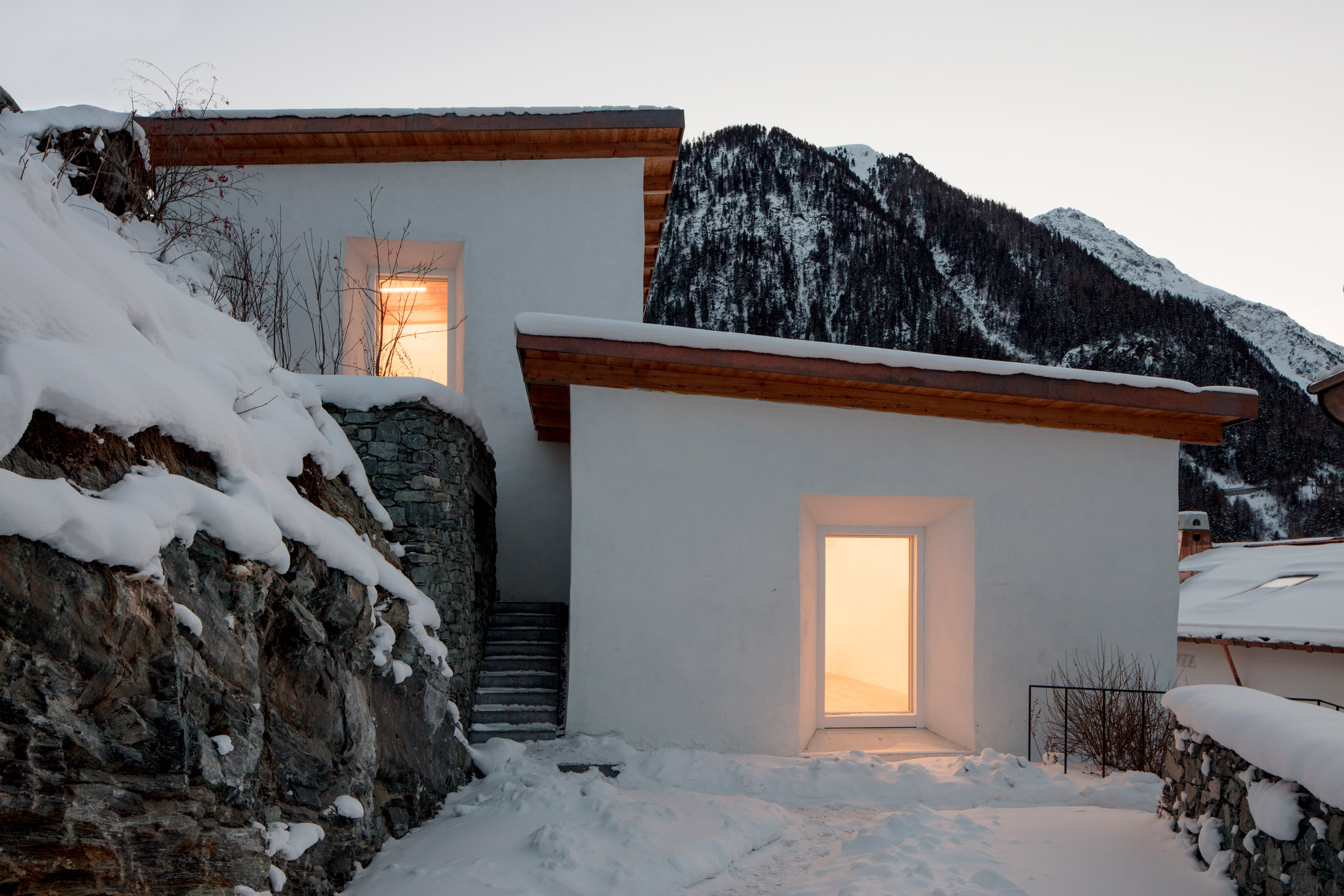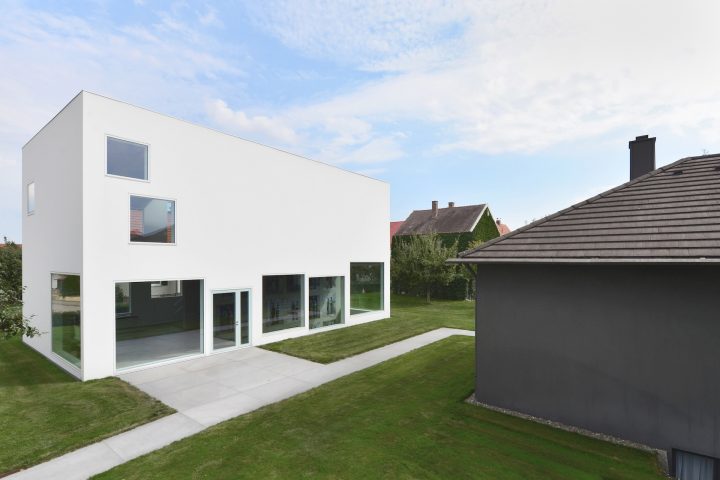UNNA, LECH, ZOUZ & CO.
The “Roden Crater” in the desert of northern Arizona may finally open after four and a half decades, although there is still no fixed date in sight. Until then, fans of James Turrell can nevertheless enjoy other sites more or less equally remote: The famous American light and space artist creates location-specific experiences which function exclusively with the natural light of the sun or moon – his permanent Skyspaces can be seen in locations as varied as Lech am Arlberg (Austria), Zouz (Switzerland), and Northumberland (UK), but also in numerous locations in the USA and even in Colomé (Argentina), for example. And incidentally also in Unna, Westphalia, where it’s worth making a stop at the Centre for International Light Art.

James Turrell, Third Breath in Unna, 2009, Image via www.lichtkunst-unna.de
KUNSTVEREIN WIESEN, SPESSART
Far off the beaten track and far from the madding crowds lies Kunstverein Wiesen, tucked away deep in the forest of Spessart, not far from Aschaffenburg. The Verein opens its doors in a former hunting lodge by individual agreement as well as on some Saturdays when no booking is required. Currently there is a show by Daniel Lergon, who became known for his extensive painting series, which he tackles with one sole color pigment in each instance – using phthalo green or alizarin. The exhibited works are part of a brand-new series, so it’s well worth a trip.

MUZEUM SUSCH, SWITZERLAND
In Switzerland’s Lower Engadin, which hosts skiers in winter and hikers in summer, the world of art has found a home: Polish collector Grażyna Kulczyk has bestowed a multi-million-dollar museum of contemporary art upon the 200-strong village of Susch; the institution is housed in spectacular architecture that eats into the stone massif. This year’s opening exhibition was entitled “A Woman Looking at Men Looking at Women”, getting its title from a volume of essays of the same name by Siri Hustvedt, and comprises works by Nicole Eisenman, Carolee Schneemann and Alina Szapocznikow among others. A new exhibition opened at the end of July, and there are numerous permanent installations.

Muzeum Susch, Image via dezeen.com
THE WALTHER COLLECTION, NEU-ULM
The private collection of Artur Walther is one of the greatest collections of photography in private hands. Under the name The Walther Collection, changing exhibitions from the collection’s own inventory are exhibited at two venues– one in New York, the other in Neu-Ulm. Both locations are currently hosting the exhibition “Then and Now. Life and Dreams Revisited”, dedicated to Chinese photography, which has formed a new focal point of the collection since 2017 – from anonymous shots from the 1910s or the omnipresent Ai Weiwei to the photo-blogger Lin Zhipeng, alias 223, in whose arrangements social media meets a Juergen Teller aesthetic.

The Walther Collection, Campus Neu-Ulm, 2018 © Juliane Peil, Image via www.walthercollection.com
CASA DAS MUDAS, CALHETA
In Madeira, magnificent flowers grow in clusters at the edge of the road – many of them the sort that are sold in Frankfurt’s weekly markets for several euros a piece. The spectacular flora, along with walks along the traditional aqueducts, is one of the Portuguese island’s most important trademarks. Somewhat less well known is the Museum of Contemporary Art, MUDAS, which doesn’t even have its own website – yet with its gigantic exhibition and event space comprising 12,000 square meters, it’s far from modest in size. Plus, its prizewinning architecture by Paulo David offers a dramatic view directly from the cliff edge over the island and the sea.

Casa da MUDAS, Image via museus.madeira.gov.pt
KUNSTVEREIN ARNSBERG
There are over 300 “Kunstvereine” (art societies) in Germany, and not all of them are based in big cities such as Frankfurt. In quiet little Arnsberg, for example, you can witness nightly performances in the forest or attend solo exhibitions by artists like Julius von Bismarck. Last on show were works by painter and performer Angela Fette, who studied at HfG Offenbach and the Städel Academy, among others. The upcoming exhibition “Ziggy goes wild” by artist Anne Duk Hee Jordan will open on September 20th, 2019.

Fabian Knecht, ISOLATION (Dead Tree) im Arnsberger Wald, Image via www.kunstverein-arnsberg.de
CHINATI FOUNDATION, MARFA
In the 1970s minimalist artist Donald Judd moved from the increasingly hated art Mecca of the big city to the Texan desert. He purchased a former military site in Marfa and proceeded to fill it with art right up until his death in 1994, incorporating works by Dan Flavin, Roni Horn and Richard Long among others, but also his own gigantic concrete boxes, which now appear in the uniquely dramatic light here as rather pleasing monoliths of eternity. Geographically, Marfa is still well off the beaten track, but solitude is a somewhat rarer commodity in this remote location these days – the Chinati Foundation also based here has long since inscribed the place in the art destination canon (incidentally, Rosa Barba was also an artist in residence here). And a few kilometers further you can find the well-known “Prada Marfa” installation by the artist duo Elmgreen & Dragset.


Wanås Konst, KNISLINGE
In a different kind of nowhere, namely the forests of southern Sweden, lies the Wanås Konst sculpture park. Even the closest town boasts just a few thousand inhabitants, yet amid the lush, proliferous vegetation you can find 70 works of art by the likes of Jenny Holzer, Ann-Sofi Sidén and Ann Hamilton. Yoko Ono has also contributed to the range, by repurposing a cherry tree as a “Wish Tree”. The park is open 365 days a year from ten in the morning to five in the afternoon and is a firm fixture on many visitors’ routes along with its adjoining castle. By the way: Wanås Konst is this year’s partner of the annual contemporary sculpture exhibition Blickachsen in Bad Homburg, so a first glimpse into the Swedish sculpture park is closer than you might think.

Jenny Holzer, Wanås Wall, 2010, Foto: Mattias Givell, Image via www.wanaskonst.se
JOSEF ALBERS MUSEUM QUADRAT, BOTTROP
The Quadrat is a museum of pre- and municipal history and a homage to the most famous artist of the city in one. In 1976 Bottrop established the Josef Albers Museum Quadrat, and a few years later Josef Albers’ wife Anni, a textile artist herself, bestowed a further substantial collection of works by the painter and color theorist to the museum. Alongside the permanent collection, the Modernist building also hosts a German representative of color-field painting in the guise of Ulrich Erben; this will be followed in September by an exhibition about Josef Albers and the Bauhaus.

Josef Albers Museum Quadrat Bottrop, Image via www.bottrop.de
MÖNCHEHAUS MUSEUM, GOSLAR
More of Nevin Aladağ, whose Music Rooms (Brussels) can be seen in the current BIG ORCHESTRA exhibition, can be found up until September 1 in Goslar. Admittedly it’s Goslar is a city, but it nevertheless lies far from the usual routes connecting Göttingen and Braunschweig and directly on the edge of the Harz Mountains: There, the Mönchehaus Museum is dedicating a solo exhibition to the artist with video works such as “Traces”, but also macramé works made of telephone and copper cables, as well as images and testimonies of previous sound performances.

Nevin Aladağ, Jali Amorph, Keramik, 2019, Installationsansicht, Courtesy Nevin Aladağ und Wentrup, Berlin © Nevin Aladağ, VG Bild-Kunst, Bonn 2019, Image via www.moenchehaus.de